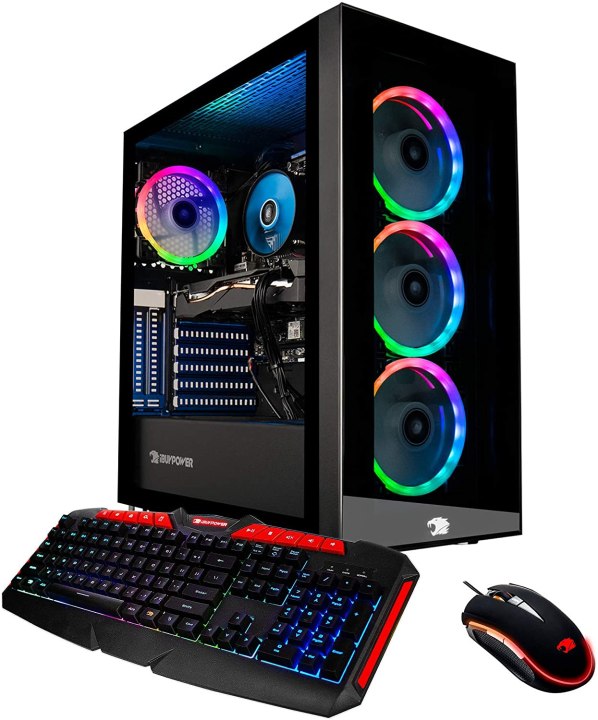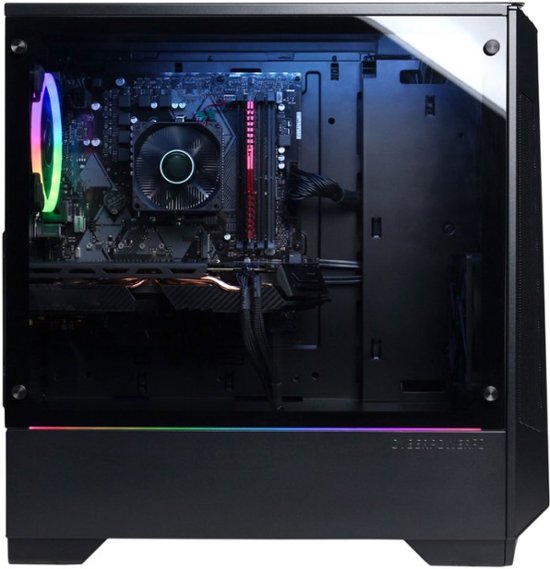Looking for the best cheap gaming PCs can be a bewildering process. If you don’t know what you’re looking for, then you may end up sinking funds into a machine that doesn’t perform as needed. That’s why our guide makes sure you have the power you need with machines under or around $1,000.
In our reviews spanning hundreds of desktop models, we think these are the best options for affordable gaming — starting with the stylish and performance-focused . It’s not only powerful but stylish and affordable, too. Like every other PC on this list, it also fully supports entry-level virtual reality (VR) headsets, like the HTC Vive and Oculus Rift.
If you’re interested in building your own affordable model, we can help there, too.
The best
HP Omen 25L

HP’s Omen 25L has been updated for 2020, and it’s ready to provide a premium gaming experience at a highly affordable price. This configuration includes a 10th-generation Intel Core i7-10700F processor and a GeForce GTX 1660 GPU that’s VR-capable. You also get 16GB of RAM, a 500GB PCIe NVMe SSD, and space for further storage upgrades.
Ports are quite versatile, too, with connections for HDMI, DisplayPort, and DVI-D. Other ports include multiple USB-A 3.0 ports at the top and rear, as well as several USB-A 2.0 and USB-C connectors. If you’re going wireless, you’ll appreciate Wi-Fi 5 and MU-MIMO compatibility as well. The glass case also allows you to show off the inner workings and RGB lighting, just like the top-tier rigs, so it’s guaranteed to look great at your desk.
While the HP Omen 25L has the highest price on our list, note that it also comes with a keyboard and mouse, which will save you some money down the line. Overall, we are deeply impressed at just how much gaming power — and style — you get for this model while still saving money compared to alternatives.
The rest
iBuyPower Element 9260

iBuyPower’s PC is built from the ground up for gaming, featuring a ninth-gen Intel Core i7-9700F (4.70GHz with Max Turbo) processor and a GeForce GTX 1660 GPU — the same GPU as our top pick, and a popular choice for VR gaming on a budget. There’s 16GB of DDR4
Ports for the iBuyPower Element 9260 include four USB-A 3.0 and two USB-A 2.0, although unfortunately there’s no USB-C option on this model yet. Display connections offer HDMI, DisplayPort, and DVI options.
Yes, the RGB keyboard and mouse are included with purchase, although you should take a look at our suggestions for the best gaming mice while you’re here! You can also choose to upgrade to a mechanical keyboard or add a capture card for easier streaming, which makes this model even better for e-sports-focused buyers.
Dell G5 Gaming Desktop (2020)

Intel’s latest G5 continues to impress with the combination of a durable, glass window tower case and updated specs to manage the latest gaming adventures. The PC includes a 10th-gen Intel Core i5-10400F processor and a GeForce GTX 1660 Super GPU. Note that you can make some upgrades here for better processors without going over $1,000, although the base model keeps the price lower.
There are a couple of sacrifices to make the Dell G5 Gaming Desktop more affordable, including 8GB of
Read our review of an older G5 model.
CyberPowerPC Gaming Desktop

While CyberPowerPC specializes in custom-built gaming rigs, it also offers complete, pre-configured PCs like this excellent choice. The model comes with a gaming-friendly, six-core Ryzen 5 3600 processor and an AMD Radeon RX 580 GPU that’s VR-ready and FreeSync-compatible.
The CyberPowerPC Gaming Desktop also includes 8GB of
Lenovo Legion C730 Cube

The cube design of this desktop PC includes a handle so that you can also carry it around to serious gaming sessions. It’s indicative of the entire vision for this Legion model: An affordable gaming computer that’s especially easy to upgrade. It won’t be playing a lot of
Inside the Lenovo Legion C730 Cube is a Nvidia graphics card that starts with the GTX 16 series and (if you have the funds) can be upgraded all the way up to an RTX 2080. There’s also an Intel eighth- or ninth-gen processor up to a Core i9-9900K and a dual-channel thermal system. You can overclock it using the Lenovo app, which makes for simple customization. Memory options include 16GB and 32GB and storage up to four terabytes in various configurations of SSD and HDD. Ports are particularly generous with eight USB-A connectors: Two USB 3.0 on the front panel, four USB 3.0 on the rear, and two additional USB 2.0 ports. There’s also an Ethernet connector and 3.5mm jacks for headphones and microphones.
Read our full Lenovo Legion C730 review.
Editors' Recommendations
- The 10 best monitors for 2024: tested and reviewed
- 9 best 2-in-1 laptops in 2024: tested and reviewed
- Does RAM speed matter for PC performance?
- Best 14-inch laptops for 2024: tested and reviewed
- 10 best gaming monitors of 2024: tested and reviewed



